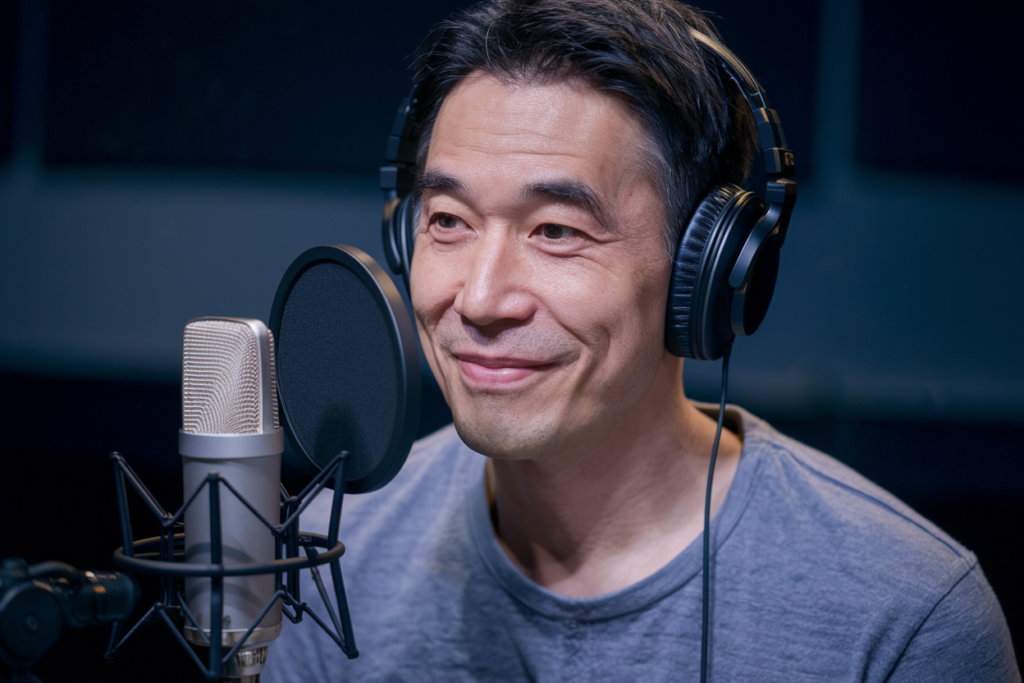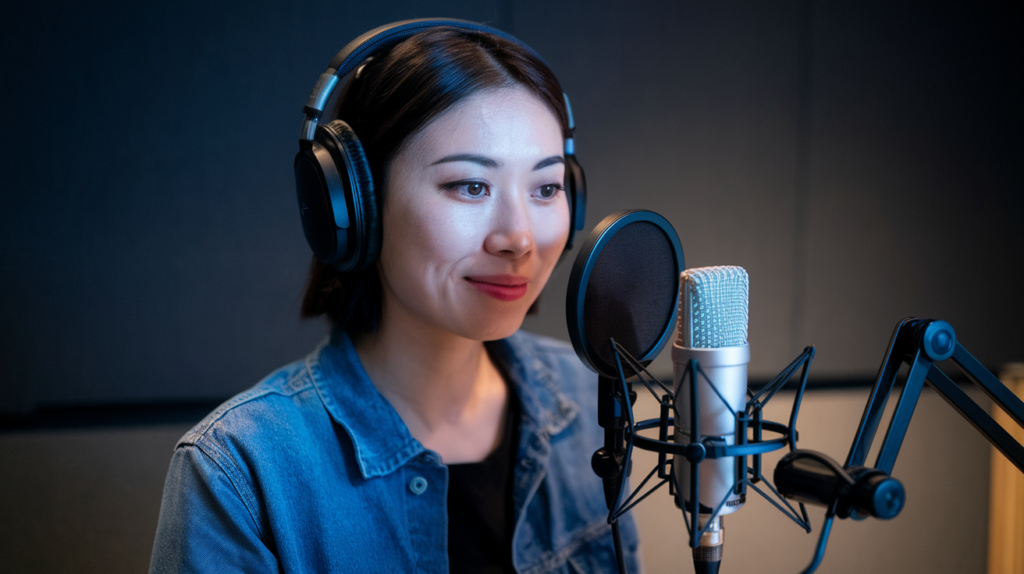Key Takeaways
- Understanding the Industry: Familiarize yourself with key players in the Japanese voiceover industry, including voice actors, directors, producers, and studios to enhance collaboration and storytelling quality.
- Cultural Nuances: Recognize the importance of cultural influences on voice acting, such as character archetypes and emotional expressiveness, to guide authentic performances.
- Essential Directing Skills: Cultivate effective communication techniques and build emotional connections with voice talent to foster genuine performances during recording sessions.
- Pre-Production Planning: Prioritize thorough pre-production planning that defines your project’s vision and character profiles to align expectations before recording starts.
- Utilizing Technology: Leverage software and quality equipment like microphones and audio interfaces to streamline the directing process for professional results.
- Overcoming Challenges: Address language barriers through bilingual staff or translators while embracing diverse talent management strategies for a more inclusive directing environment.
Ever wondered what it takes to direct Japanese voiceovers like a pro? Whether you’re diving into anime, video games, or commercials, understanding the nuances of directing in this vibrant language can make all the difference.
Understanding Japanese Voiceover Industry
The Japanese voiceover industry thrives on creativity and cultural nuance. It plays a vital role in shaping content across anime, video games, and commercials, making it essential to understand its inner workings.
Key Players in the Industry
Several key players contribute to the vibrant landscape of Japanese voiceovers.
- Voice Actors: These skilled individuals bring characters to life with their unique vocal talents. The connection between voice actors and their roles often defines the success of a project.
- Directors: Directors oversee the entire production process, guiding voice actors to deliver performances that align with creative visions.
- Producers: Producers manage budgets and timelines while ensuring quality standards are met throughout the project’s lifecycle.
- Studios: Recording studios provide the necessary environment for high-quality recordings, equipped with advanced technology to capture every nuance.
Each player collaborates closely, forming an ecosystem that fosters exceptional storytelling through voiceovers.
Cultural Influences on Voice Acting
Cultural nuances significantly shape voice acting in Japan.
- Character Archetypes: Familiarity with common character archetypes enhances performance authenticity—think about how certain voices embody specific traits or emotions.
- Language Nuance: Understanding regional dialects and slang adds depth to character portrayals. A subtle shift in intonation can convey distinct meanings or feelings.
- Emotional Expressiveness: Japanese culture places high value on emotional expression; thus, voice artists often undergo extensive training to master conveying complex emotions through their voices.
Being aware of these factors enriches your understanding of directing within this unique industry landscape.
Essential Skills for Directing
Directing voiceovers requires a unique set of skills to bring out the best in voice talent. Mastering these skills enhances the quality of your projects and creates an engaging experience for both the actors and the audience.
Communication Techniques
Effective communication is key when directing voice actors. You must articulate your vision clearly, allowing them to understand the project’s tone and intent. Utilize direct language while being open to feedback, fostering a collaborative atmosphere. Encourage voice artists to ask questions; this interaction can lead to better performances. Active listening plays a crucial role too; it helps you gauge their comfort level and confidence during recording sessions.
Emotional Connection with Talent
Building an emotional connection with your voice talent is vital for achieving authentic performances. Take time to understand each actor’s strengths and weaknesses, tapping into their unique styles. Share insights about characters or scenarios that resonate emotionally, guiding them toward genuine expressions. Creating a relaxed environment encourages vulnerability, allowing actors to explore various emotional depths—whether it’s joy, sadness, or tension—resulting in compelling voiceovers that captivate audiences.
The Directing Process
Directing Japanese voiceovers involves careful planning and dynamic interactions. Understanding how to navigate both pre-production and recording sessions ensures you achieve high-quality results.
Pre-Production Planning
Effective pre-production planning sets the stage for successful voiceover sessions. Start by defining your project’s vision, including tone, style, and character profiles. Collaborate with scriptwriters to ensure dialogues resonate with cultural nuances. Choose voice actors who match the characters’ personalities; their unique qualities can bring your project to life.
Prepare a detailed session plan that outlines each scene’s emotional beats. Share this with your voice talent before recording begins to align expectations. Consider creating reference materials such as mood boards or audio samples to illustrate what you’re aiming for. This clarity fosters better communication and helps voice artists deliver authentic performances.
Recording Session Dynamics
Recording sessions require a blend of structure and flexibility. Establish a comfortable environment for your voice actors; stress-free settings encourage creativity and genuine expressions. As the director, engage actively with your voice talent during takes—offer feedback that guides them without stifling their instincts.
Utilize varied directing techniques: provide examples when needed but allow space for improvisation where appropriate. Listen closely to how each actor interprets their lines; subtle adjustments may enhance their delivery significantly. Record multiple takes so you have options during post-production; this practice often captures unexpected gems from talented performers.
Balancing direction with encouragement builds trust between you and your artists, leading to compelling outcomes in every project.
Tools and Technologies
Understanding the tools and technologies available for directing Japanese voiceovers enhances your ability to achieve professional results. The right software and equipment streamline the process, allowing you to focus on guiding voice talent effectively.
Software for Voice Direction
Software plays a crucial role in voice direction. Programs like digital audio workstations (DAWs) allow you to record, edit, and mix audio tracks seamlessly. Popular DAWs include:
- Pro Tools: Known for its robust editing capabilities, Pro Tools helps manage multiple tracks easily.
- Adobe Audition: Offers intuitive features for sound design and noise reduction, ideal for polishing recordings.
- Reaper: Affordable yet powerful, Reaper supports extensive plugins that can enhance your workflow.
Additionally, consider using collaboration tools such as Zoom or Skype during remote sessions. These platforms enable real-time feedback while maintaining communication with voice actors across distances. When selecting software, ensure it meets your project needs while remaining user-friendly.
Equipment Essentials
Investing in quality equipment elevates the overall production quality of your voiceovers. Key items to consider include:
- Microphones: A good microphone captures clear audio with minimal background noise. Condenser mics are popular choices among voice artists due to their sensitivity.
- Audio Interface: This device connects microphones to computers, converting analog signals into digital formats for recording.
- Headphones: Closed-back headphones help isolate sound during recordings. They let you monitor audio without bleed affecting the session.
- Acoustic Treatment: Create a controlled environment by adding soundproofing materials like foam panels or bass traps to reduce echo and external noise.
Challenges and Solutions
Directing Japanese voiceovers presents unique challenges that require thoughtful solutions. Understanding these obstacles can enhance the directing process and lead to exceptional outcomes.
Navigating Language Barriers
Language differences can complicate communication between directors and voice actors. Misinterpretations may arise, affecting the intended emotional delivery of lines. To tackle this challenge, using bilingual staff or translators during sessions proves invaluable. This approach ensures clarity in conveying feedback and direction while keeping the performance authentic to cultural nuances. Additionally, providing scripts with phonetic pronunciations helps voice talent grasp character emotions effectively.
Managing Diverse Talent
Diversity among voice talent offers a rich pool of creativity but can also pose management challenges. Each voice actor brings different styles, experiences, and interpretations to the table. Adapting your direction to suit individual strengths fosters an inclusive environment where every artist feels valued. You might consider conducting pre-session auditions or workshops to gauge each actor’s range before casting them in specific roles. Creating tailored session plans allows you to maximize each actor’s potential while ensuring alignment with project goals.
By addressing language barriers and embracing diverse talent management strategies, you enhance your ability to direct impactful Japanese voiceovers seamlessly.
Conclusion
Directing Japanese voiceovers requires a blend of cultural understanding and technical skill. By fostering strong relationships with voice actors and utilizing effective communication techniques, you can create an environment where creativity flourishes. Emphasizing preparation through detailed planning and the right tools will elevate your production quality.
Navigating challenges like language barriers or diverse talent demands flexibility and adaptability. By embracing these aspects, you’ll not only enhance your directing abilities but also contribute to creating engaging content that resonates with audiences. With dedication to the craft and an appreciation for the nuances of Japanese voice acting, you’ll be well on your way to producing outstanding voiceovers.
Frequently Asked Questions
What is the importance of directing Japanese voiceovers?
Directing Japanese voiceovers is essential for achieving professional results in anime, video games, and commercials. It involves understanding cultural nuances and language intricacies to shape high-quality productions that resonate with audiences.
Who are the key players in the Japanese voiceover industry?
Key players include voice actors, directors, producers, and studios. Each contributes significantly to the creation of content by bringing characters to life through their unique skills and collaboration.
What skills are necessary for directing voiceovers?
Essential skills include effective communication, emotional connection with talent, clear vision articulation, and fostering a collaborative atmosphere. These enable directors to guide voice actors toward authentic performances.
How does the directing process work in voiceover projects?
The directing process involves careful planning and dynamic interactions. This includes defining project vision, collaborating with scriptwriters, selecting suitable voice actors, and maintaining a balance between structure and flexibility during recording sessions.
What tools are recommended for successful voice direction?
Recommended tools include software like Pro Tools or Adobe Audition for audio editing and mixing, along with high-quality microphones and audio interfaces. Collaboration tools such as Zoom or Skype enhance remote communication during sessions.
What challenges do directors face when working on Japanese voiceovers?
Directors may encounter language barriers and diverse talent management issues. Solutions include employing bilingual staff or translators and providing phonetic scripts to help actors deliver authentic performances while adapting direction to individual strengths.







